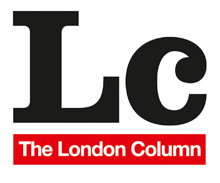At the Zoo.
Posted: November 27, 2015 Filed under: Architectural, Vanishings, Wildlife | Tags: Berhtold Lubetkin, David O'Shaughnessy, East London Photomonth, Hackney Wick, London Hipsters, London Zoo, Lubetkin penguin pool, Zoo Logical 1 Comment
© David O’Shaughnessy.
David Secombe:
My old friend David O’Shaughnessy has an exhibition currently on show at Stour Space, Hackney Wick (part of Photomonth, the east London photography festival). David’s show is called Zoo Logical, and is a study of the habitats of zoo animals in New York, Dublin and, as showcased here, London.

© David O’Shaughnessy.
The key word is habitat: the animals themselves are absent. The viewer is confronted with a series of disconcertingly empty rooms reminiscent of deserted stage sets: which is, of course, the point. The animals are expected to perform for our benefit, and their man-made surroundings either mimic their natural environment or display them as specimens in an alien setting. (As beautiful as Berthold Lubetkin’s penguin pool is, the birds themselves hated it.)

© David Shaugnessy
Walking round the exhibition last weekend, it struck me that David has selected the perfect location for his show. For those unfamiliar with the locality, Hackney Wick is a kind of giant guinea pig cage for hipsters. A stone’s throw from the Olympic Park to the south, and within sight of the looming bulk of Westfield shopping mall, the area offers an environment as fitted to the needs of well-heeled young urbanites as any zoologically engineered habitat. All the key elements are in place: retro-fitted brown field decrepitude, bars and cultural spaces sprouting from light industrial units, towpaths to cycle on, and a sprinkling of riverside new-builds. Anyway, this post is written in haste as Dave’s show ends on Monday: so allow me to suggest that you treat yourselves to a visit to Hackney Wick this weekend. Enjoy the exhibition, drink a craft beer or two and look at the men with funny hair.
Give a little Whistler.
Posted: November 6, 2015 Filed under: Architectural, Artistic London, Bohemian London, Meteorological, The Thames | Tags: 5th of November, Albert Bridge, flinging a pot of paint in the public's face, foggy day in London town, Guy Fawkes night, James Whistler, John Ruskin, Thames in fog Comments Off on Give a little Whistler.From J.M. Whistler’s ’10 o’clock Lecture’, 1885, reprinted in The Gentle Art of Making Enemies, 1892:
And when the evening mist clothes the riverside with poetry, as with a veil, and the poor buildings lose themselves in the dim sky, and the tall chimneys become campanili, and the warehouses are palaces in the night, and the whole city hangs in the heavens, and fairyland is before us …
The recent fog in London, despite its inconvenience for air travellers, commuters, etc., proved to be quite a popular meteorological event: instead of invoking Bleak House’s November gloom it made the city look impossibly glamorous. The above photo was taken on the evening of Sunday, 1st November, during a wander along the Chelsea Embankment: Whistler territory. The great American painter was a local from 1859 until his death in 1903, and his ‘Nocturnes’ of the Chelsea/Battersea foreshore transform the Victorian industrial Thames into a Japanese world of shadows and fugitive lights. (Whistler was fond of applying musical terms to painting, so his nocturnes derive from Chopin: by the same token, Debussy was a fan and his orchestral Nocturnes return the compliment, evoking the Seine in the same mood as the painter’s Thames.)
The final nocturne was ‘The Falling Rocket’, a sort of proto-Abstract Impressionist take on fireworks at Cremorne Gardens, a pleasure garden located roughly where Lots Road Power Station is now. You don’t need me to tell you that this is the painting condemned by Ruskin in terms incendiary enough (‘I have seen, and heard, much of Cockney impudence before now; but never expected to hear a coxcomb ask two hundred guineas for flinging a pot of paint in the public’s face’) for artist to sue critic. Whistler won the case but was awarded joke damages and went bankrupt. No matter. Posterity has found in Whistler’s favour; he even has his own statue now, on the north side of Battersea Bridge.
This post is really a couple of years late, as there was a reportedly excellent show of Whistler’s Thames paintings at the Dulwich Picture Gallery. I say ‘reportedly’ because I was marooned on the south coast at the time and missed the bloody thing. But I’m back now, which is why I chanced to be walking along the Chelsea Embankment on Sunday night … (As it happens, I am writing this on Guy Fawkes night. Even in the pissing rain, I can look out of my 6th floor window and see the whole city lit up by sparkling lights. Some of them are even fireworks.) D.S.







